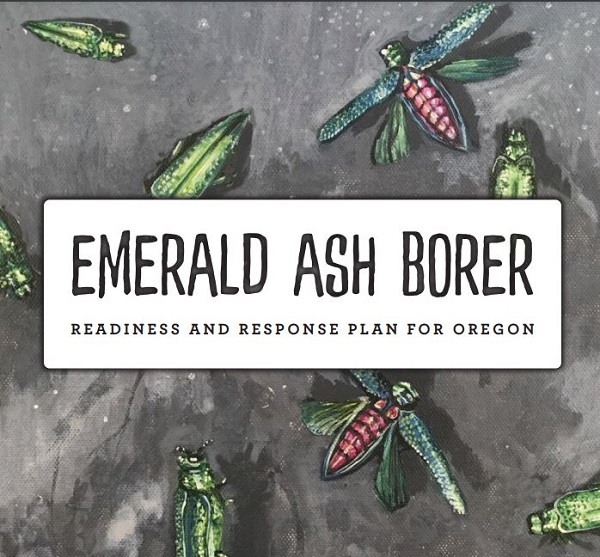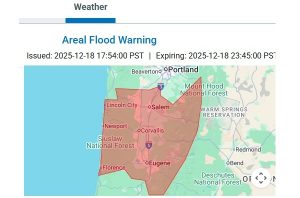ODF collects 900,000 seeds from species threatened by emerald ash borer
4 min read
from the Oregon Department of Forestry
SALEM, Ore. – The Oregon Department of Forestry recently completed an unprecedented effort to collect seeds from populations of Oregon ash trees (Fraxinus latifolia) throughout the Oregon portion of the species range, before they are wiped out by an invasive pest.
Between 2019 and the end of 2022, five ODF staff members collected more than 900,000 seeds from 245 mother trees representing 27 distinct populations from the Coast Range throughout the Willamette Valley and the western Cascade foothills, and south to the California border.
The collecting effort was made possible by a federal grant from the USDA Forest Service. ODF Invasive Species Specialist Wyatt Williams coordinated the collecting and where the seeds were sent for safe storage and studies.
“We learned from our counterparts that almost all the native ash in infested areas in the eastern half of the country were killed within 10 years or so after the arrival of the invasive emerald ash borer,” said Williams. “We sought a grant to help us collect a representative sampling of seeds so we could preserve as much of the genetic variation in Oregon ash as possible before it was lost.”
Williams said ash seed that was collected was cleaned and sorted at ODF’s JE Schroeder Seed Orchard facility in St. Paul, Oregon. A third of the seeds were sent to the primary long-term storage facility at the Center for Agricultural Resources Research (ARS) National Seed Lab in Fort Collins, Colorado. Equal amounts were also sent to the USDA Forest Service’s Dorena Genetic Resource Center in Cottage Grove and to the USDA Agricultural Research Service’s North Central Regional Plant Introduction Station in Ames, Iowa. This will allow both sites to help facilitate research on Oregon ash, the only species of ash native to the state.
“Researchers can plant some of the seeds in areas where emerald ash borer is present in significant numbers and see if any of the seedling trees show resistance to the insect,” said Williams. The first two genetic trials of ash were planted recently, using seed collected by ODF and others, and will serve as sentinels for resistance as EAB spreads to those areas. “If some trees survive, those resistant trees could become the basis for reintroducing the species to western Oregon. Resistant trees would be crossed with other Oregon ash to establish resistance while retaining genetic diversity.”
USDA Forest Service Forest Geneticist Richard Sniezko at Dorena said such a process could take many decades, based on results from programs to breed white pine trees resistant to white pine blister rust or Port Orford-cedar trees resistant to Port Orford-cedar root disease. “We don’t know if we will find resistance or if we do, how durable it will be. But by preserving the full range of genetic diversity in the species if we do find resistance we can ensure trees that are cross-bred and reintroduced are well suited to all parts of their habitat range.”
The Dorena center is a world-leader in resistant population development and has had success with several conifer species in other resistance breeding programs.
Background
Likely introduced on wooden shipping material from Asia, emerald ash borer was discovered in the Michigan area in 2022. Despite numerous attempts to eradicate the pest, it proved impractical to stop the spread. It was first found in Oregon in Forest Grove in late June 2022. Monitoring since then has shown infested trees beyond the original site extending into nearby natural areas, where Oregon ash grows in abundance in wetlands and along streams.
Emerald ash borer is readily transported in infested wood, especially firewood. That’s one reason state and federal officials urge campers and others to buy firewood near where they plan to burn it, and not transport ash wood outside areas known to be infested.
“The strategy in Oregon is to slow the spread to give communities time to deal with the threat,” said Williams. “That way, communities will have more time to inventory their urban forest and identify all their ash trees, then make decisions about which ones to treat or remove pre-emptively. It also gives the time to make arrangements for what to do with all the ash wood that will become available as trees die.”
Williams said the cost to replace public ash trees in Portland, Oregon alone was estimated in 2017 to be $49 million, and is likely higher today.
The state of Oregon began surveys for emerald ash borer in 2005, sponsored by USDA Animal Plant Health Inspection Service. ODF managed a statewide trapping program for EAB during the 2013-2015 summer when adult emerald ash borers emerge. About 800 surveillance traps were set. No EAB were found at that time.
Oregon also used USDA funding to build and implement the Oregon Forest Pest Detector Program. This program, administered through Oregon State University Extension, educates tree care, forestry, and other professionals on how to find and report emerald ash borer. Started in 2015, over 500 people have been trained at 29 workshops across the state.
ODF also secured USDA Forest Service grant funding to develop a statewide EAB Readiness and Response Plan. The plan was released in May 2018. Collecting ash seeds from Oregon’s native ash species aligns with recommended action items in the statewide plan regarding conservation and restoration of ash following arrival of emerald ash borer into Oregon.
Data showing where seed was collected is available in a user-friendly web map that is viewable here.
The map identifies Oregon ash seed collection at the following sites: Albany-Interstate Sloughs (2019); Ashland (2022); Applegate River (2019 and 2022); Baskett Slough Wildlife Refuge (2019); Columbia River Gorge (2022); Cow Creek – Riddle (2019); Fern Ridge Lake (2019 and 2022); Finley NWR (2022); Gales Creek (2022); Jackson Frazier Wetland (2019); Jewell (2022); Lookout Point Lake (2022); Molalla River (2022); Nehalem River (2022); North Bank Umpqua (2022); North Santiam River (2019); North Yamhill River (2022); OSU Soap Creek – EE Wilson WA (2019); Rouge River – JH Stone Nursery (2019); Sauvie Island – Columbia River (2019); Schroeder Seed Orchard (2019); Siuslaw River – Mapleton (2019); South Cow Creek (2019 and 2022); South Santiam (2022); South Umpqua Jackson Creek (2022); Tualatin River (2022); and Umpqua (2022).





